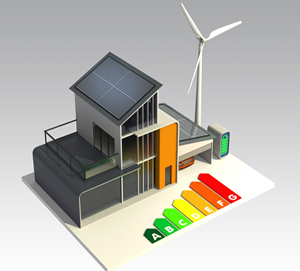Trending
Energy improvements easier with new mortgage program
HomeStyle Energy Mortgage is useful for buying or refinancing a house

Want to put solar panels on your roof — owning them outright rather than having to lease from some third-party company? There’s a new home mortgage program that’s just hit the market and could help make that happen. And since it’s long-term mortgage money, the interest rates are similar to those on a regular home loan — currently in the mid to upper 3 percent range if you’ve got good credit.
Equally important, you end up pocketing the generous 30 percent federal investment tax credit that’s available for owners who install solar panels, unlike when you lease them. Plus you can add demonstrable equity value to your home, save on utility bills, and avoid the hassles and potential buyer objections to taking over your payments on leased panels when you sell your home.
The new program, known as the HomeStyle Energy Mortgage, comes from giant investor Fannie Mae. It’s useful for far more than solar panels, too. Say you’re buying or refinancing a house and you see the need for energy-saving renovations. Maybe you want to add insulation, install water-conserving toilets in bathrooms, replace the HVAC system and get rid of those leaky old windows and doors.
Rather than having to pay for these upgrades out of pocket, or borrow at unfavorable interest rates, you can essentially roll them into a new mortgage. In recognition of the value being added to the property by virtue of cutting utilities bills for the long term, participating lenders will let you borrow more than on a standard mortgage.
There are some special requirements and limitations of course: Borrowers can only receive up to a maximum of 15 percent of the as-completed appraised value of the home to use for the upgrades. The portion of the loan amount designated for energy improvements must be placed into an escrow account overseen by the lender. Appraisers must also determine the as-completed, enhanced valuation of the property expected after the improvements and verify that they were indeed completed. When upgrades are made that cost more than $3,500 in total, an energy efficiency analysis is required, such as a HERS (Home Energy Rating Systems) report.
HomeStyle Energy loans can also be used to pay off existing energy-related debts, such as credit card balances, home equity credit lines or so-called “PACE” (Property Assessed Clean Energy) liens that are popular in some parts of the country and are tied to local property tax assessments.
Cliff Majersik, executive director of the Institute for Market Transformation, a Washington D.C.-based research and advocacy group active in the energy conservation field, calls Fannie’s new program “a big win” for home owners, buyers and sellers. Fannie Mae has a national network of participating lenders, he noted, and now “provides the cheapest source of financing” for energy improvements anywhere. Martha Campbell, a senior associate at the Rocky Mountain Institute in Colorado and a specialist in home energy issues, says the HomeStyle Energy Mortgage should help home owners “capture the value” of the improvements they make to their properties when it comes time to resell — something that’s not always the case today.
Fannie Mae’s main competitor in the mortgage market, Freddie Mac, also offers energy financing options that you should know about if you’re considering doing major upgrades. According to Freddie spokesman Brad German, its energy improvement loan versions have some key advantages compared with Fannie’s program: There is no cap on the percentage of as-completed appraised value that can go for energy improvements. There is no mandatory residential home energy report. And Freddie’s maximum debt-to-income limit for borrowers extends to 45 percent versus Fannie’s 38 percent max.
So how can you make the most of these new, consumer-friendly mortgage programs? Top of the list: Take a hard look at the utilities bills on your home. If you’re like me, they’re higher than they could be with some selective improvements. They don’t have to be big-time solar arrays on the roof — studies have shown that energy retrofits of existing homes can create substantial savings on utilities bills and boost your home’s resale value, especially in a world where growing numbers of buyers are aware of — and ask about — utilities expenses.
Then, if you see potential benefits, talk to lenders about Fannie’s and Freddie’s programs. If the lender has no clue about them, you’ll know it’s not up to speed — and probably not the one for you.




